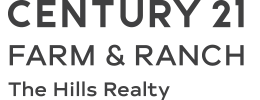Bee County is a relatively small south central Texas county, founded over 150 years ago and named after Barnard E. Bee, Sr, a secretary of state of the original Republic of Texas.
The county seat of Beeville is known for the Bee County Courthouse, designed by architect William Charles Stephenson in 1912. It’s joined by the striking Rialto Theater, which is now used for special events rather than film showings.
Officially formed on December 8, 1857, Bee County was carved out of sections of Refugio, Live Oak, San Patricio, Goliad, and Karnes counties. The early European settlers of this part of the nation were mostly Irish immigrants, although this trend gave way to movement from other Southern states, namely Louisiana, Mississippi, and both North and South Carolina, as the 19th century drew to a close.
The county is rich with religious history, going back to the state religion of Roman Catholicism until the Republic of Texas was officially formed in 1836. As more settlers arrived, prominent numbers of Protestant people, particularly Methodists and Baptists, populated the land. Numerous churches sent missionaries to the area to help the survival of these early congregations. By the end of the century, they were the dominant force in the state.
As recently as 2010, the county held a population of around 32,000 people, spread across 880 square miles of terrain. This makes for a very rural population density of 36 people per square mile. It also means that there is a wealth of undeveloped land opportunity within the county.
With a quarter of the population under age 18, the county houses 7 school districts, from the full K-12 Beeville Independent School District to a number of satellite locations serving partial age demographics. The Coastal Bend College is the lone post-secondary institution in the county, serving the surrounding areas as well.
This centrally located part of Texas enjoys relatively close access to metropolitan centers like San Antonio and Houston. The broad landscape is crisscrossed by several highways, including US Highways 59 and 181, Texas State Highways 72, 202, and 359, and several Texas Farm to Market Roads, an important feature of rural areas like this.
